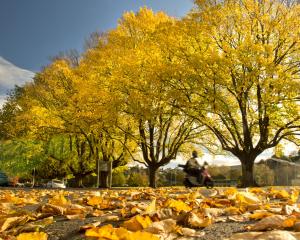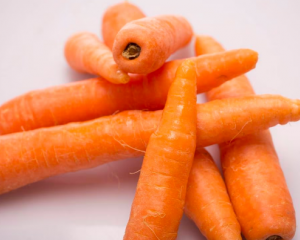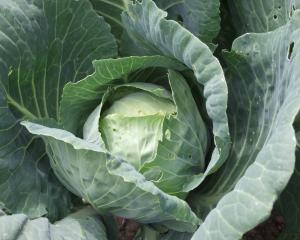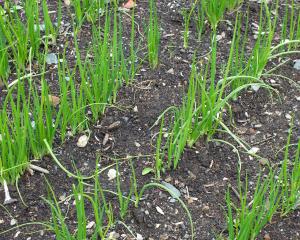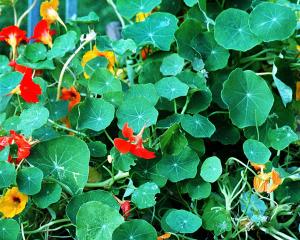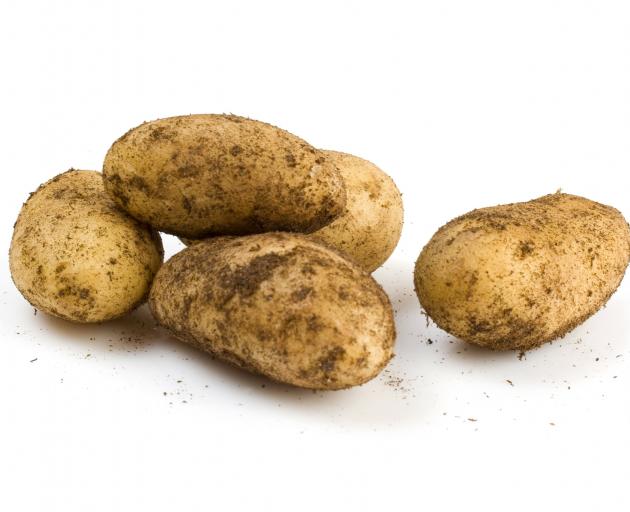
Potatoes planted in August will be maturing and ready to eat for Christmas dinner.
Dig them just before using, two days ahead at most, because the immature tubers do not store well.
When left in the soil, they will continue growing and even a few extra weeks in the ground can produce a crop that is twice as heavy.
Main-crop potato plantings will be ready for a final earthing-up. A dressing of sulphate of ammonia (50g per metre of row) will encourage the extra foliage growth necessary to convert sunlight into food materials.
All brassicas, including cabbages, cauliflowers and turnips, are a favourite food of white butterfly caterpillars and clouds of white butterflies can sometimes be seen over paddocks of swedes.
In the garden, white butterflies are seen from now until late autumn. They can be kept under control by treating plants with derris dust. Do not use plants within a week of dusting and wash thoroughly before eating.
Grey aphids spend the winter in small numbers on overwintering plants such as cabbages and Brussels sprouts, then multiply rapidly as the weather warms.
The bluish-grey colonies live on both sides of leaves, which can curl and twist as the pests’ sucking damages the tissues.
A simple spray of dishwashing liquid mixed with water (15ml dishwashing liquid to 1 litre of water) will help keep plants clean and healthy.
Small plants that have been badly attacked by aphids rarely recover and are best pulled out.
By now, no more asparagus should be cut, so the plants can build up food reserves in the roots for next season’s crop.
Weed or cultivate carefully among the plants (crowns) to avoid damaging the fine feeding roots.
The plants are most active at this time of the year and will benefit from a mulch of garden compost mixed with blood and bone manure (200g to a 10-litre bucket of compost).
This mulch also helps keep weeds down.
Harvesting peas after the beginning of February can be a challenge. By the second month of the year, many soils have become too dry for the plants to grow and the pods to fill.
Wet autumns are more favourable for peas, but even then there is some danger from fungal diseases.
Peas like their roots to be cool and kept moist, so it is almost impossible to produce a good crop of late peas on dry, shallow soils unless the area is well cultivated and plenty of humus is added.
After watering in dry weather, mulching with lawn clippings or compost will give peas a boost.
Flowers
They rarely get it, but flowering annuals deserve the same care given to vegetable crops. The roots of many annuals are short-lived and rather feeble, and if there is too much competition for the available food, they suffer.
Young plants that have a single stem with one flower bud should have that bud nipped out to encourage bushier growth.
When it comes to watering, big is best. Watering in small doses brings roots close to the surface, so when the garden is dry, soak it thoroughly. This means fewer sessions with the hose and lower water use overall, particularly important if council water restrictions are in force.
Roses picked for indoors should be cut just above a five-fingered leaf. This form of summer pruning helps ensure a good display in autumn from repeat-blooming varieties.
Do not pick flowers when they are wet.
Cutting off withered blooms regularly will give a longer flowering period. This is especially true for sweet peas.
Rock garden spring displays will be over, so faded flower heads and seed pods should be removed. If these are left to mature, the plants will lose some vigour.
Spreading plants can be trimmed back a little to encourage strong basal growth and prevent dry centres forming.
Alpine plants that have finished flowering can be trimmed back. Look out for slugs and snails hiding under the cover of foliage.
Primroses and polyanthus can be divided in early summer. If very large clumps are allowed to form, fewer flowers will result. These plants need ample supplies of manure or compost, so mix a generous amount into the soil before replanting. Water generously until the plants are established.
Gazanias are reliable plants for hot, sunny banks and corners. Although perennial, they are only half-hardy, with limited tolerance to frost, so cannot be wintered over in most of the region.
Lawn
Lawns can have a twice-yearly dressing of a commercial mix containing superphosphate and sulphate of ammonia. Scatter 30g of the mixture for each square metre of lawn and water well.
An easy way to distribute the fertiliser is to mix it with its own volume of dry soil or sand. Cover the area evenly. Any overdressed areas will show burned patches, but they will soon recover.
Fruit
Loganberries, cultivated blackberries and related plants tayberries, youngberries, boysenberries and marionberries can have their fruiting branches removed entirely once the crop has been harvested.
Some thinning of new growth might also be needed in vigorous plants, and tie up canes that are to bear next season’s fruit so the wood is exposed to the sun to ripen it.


